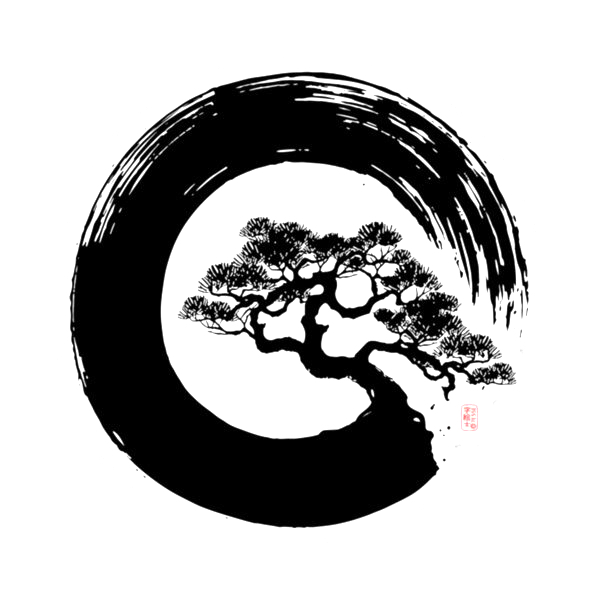You’d be forgiven for thinking a tree comes from the ground. After all, it’s stuck there. It drinks water through its roots, stands upright on a trunk like a proud citizen of Earth, and if you pull one up, there’s dirt all over the bottom. Case closed, right? Not quite. As it turns out, trees are con artists. Elegant, leaf-covered con artists built mostly out of invisible air.
The great physicist Richard Feynman once said, “People look at a tree and think it comes out of the ground, but it’s really coming out of the air.” And of course, he was right. Most of a tree’s mass doesn’t come from the soil at all; it comes from carbon dioxide, floating lazily in the atmosphere. Through photosynthesis, trees absorb that carbon, mix it with water (which also fell from the sky), and use sunlight to whip up a batch of sugars. Those sugars become wood and that wood becomes the tree. Which means, if you really boil it down, a tree is just sunlight and breath that learned how to stand still.
So what does the soil do? Not much, it turns out. It’s like the tree’s supplement drawer: some potassium, a little nitrogen, a sprinkle of magnesium. Important, yes, but nowhere near as substantial as we’ve been led to believe, so terms of mass, dirt is a cameo role in a drama dominated by air.
This flips a lot of Western ideas about growth on their heads. We tend to think of progress as upward, outward, bigger, more. Fertilizer bags are sold by the kilo. Redwoods are measured in feet. We like to think growth comes from foundation and force. But the East, particularly through bonsai, offers a different story. In Japan, a centuries-old philosophy of cultivating miniature trees in shallow pots reminds us that growth isn’t always about size; it’s about form, balance, intention. You could say bonsai is wabi-sabi in botanical form: quiet, imperfect, and profoundly patient. These tiny trees still draw carbon from the air just like their skyscraping cousins, but they do it with elegance, constraint, and a very well-manicured sense of scale.
This speaks to something deeper, maybe even spiritual. Bonsai embodies the principle of mono no aware, the gentle, bittersweet awareness of the passage of time. A bonsai is never finished. It’s not on a trajectory toward “full size.” It’s a relationship, not a project. In contrast, many Western yards still host the philosophy of “bigger is better,” with fast-growing hybrids and genetically boosted evergreens that scream up into the sky, only to later collapse onto the neighbor’s fence during a mild thunderstorm.
When you realize trees grow mostly from thin air, it makes bonsai all the more impressive. You’re essentially training atmospheric carbon into a work of living sculpture. It’s origami with molecules stolen from your exhale. And this also means that, despite the bonsai’s smallness, it’s no less noble than a cedar that took over a hillside. Both are carbon vaults. Both are photosynthesis in slow motion. One just happens to fit on your kitchen counter.
There’s also something hilarious and strangely profound about the fact that we walk past these giant structures every day. Trees, that are quietly inhaling our waste gases and exhaling the oxygen we need, while we yell at clouds and look for Wi-Fi. They’re doing alchemy in broad daylight and we’re too busy with our phones to notice. Trees are humble magicians. And all they want is a little CO₂ and some sun. Maybe they know something we don’t.
So next time you sit under a tree, maybe consider the fact that it’s mostly air. That it grew not from the dirt beneath your feet, but from the same atmosphere you’re walking through. You might start to feel a little lighter yourself. A little less grounded, in the good way. And maybe you’ll think about planting something-not just to shade the garden, but to sculpt a little air into beauty.
In a world that moves fast, where growth is measured in data and download speeds, the tree reminds us of something else: that life can be built from stillness, breath, and light.
Author’s Note
This article began as a deep-dive into carbon and ended with me questioning whether my bookshelf is more spiritual than I am. If trees can grow from air, maybe we’re all a little more vapor than we thought. Somewhere between the redwood and the bonsai lives a good metaphor for how to live; one that doesn’t take up too much space, draws from what’s already around, and doesn’t mind growing slowly.
I came across this while digging into some basic science, and ended up having an existential moment in the produce aisle. That apple? Air. The paper in my notebook? Air. Even my wooden bookshelf? Mostly air.
There’s something magical about realizing that the world’s biggest, oldest, most grounded organisms are actually sky sculptures. It’s humbling. And hopeful.
地面から木が生えてくると思っても、責められることはありません。だって、木はそこにしっかり根を張っているのですから。根から水を吸い上げ、誇らしげに大地に立つその姿は、まるで地球市民のよう。そして、もし木を引き抜いてみれば、根っこには土がびっしりと付いています。これで話は終わり…かと思いきや、実はそう単純ではありません。木というのは、優雅な葉をまとった詐欺師のようなもの。しかも、その大部分は目に見えない空気からできているのです。
偉大な物理学者リチャード・ファインマンはかつてこう言いました。「人々は木を見ると地面から生えてきたと思うが、実際は空気からできているんだ」と。そして、もちろん彼の言う通りです。木の質量のほとんどは土から来ているわけではなく、空を漂う二酸化炭素から来ているのです。光合成によって木はその炭素を吸収し、空から降ってきた水と混ぜ、太陽の光を使って糖分を作り出します。その糖分がやがて木材となり、木そのものになる。つまり、突き詰めれば、木というのは「立ち上がることを覚えた太陽の光と呼吸」なのです。
では、土の役割は?実はそれほど大きくありません。土は、木にとってのサプリメント棚のようなもの。カリウムや少しの窒素、マグネシウムをちょっとだけ。もちろん大切ですが、私たちが思っているほど本質的なものではありません。質量という観点では、土は空気が主役のドラマにちょっとだけ登場する脇役にすぎないのです。
この事実は、西洋的な「成長」に対する考え方をひっくり返します。私たちは成長を「上へ、外へ、大きく、もっと」と捉えがちです。肥料はキロ単位で売られ、レッドウッド(セコイア)の高さはフィートで測られる。成長は「基盤」と「力」から生まれると信じている。でも、東洋、特に盆栽の文化は違う物語を語ります。日本では、浅い鉢で小さな木を育てる何百年もの哲学があり、成長は必ずしも大きさではなく、形やバランス、意図にあることを教えてくれます。盆栽は、言うなれば植物界の「侘び寂び」。静かで、不完全で、とても忍耐強い。これらの小さな木も、空気中の炭素を大木と同じように吸収しますが、そのスケール感は、洗練され、抑制され、見事に整えられています。
これは、もっと深い、もしかすると精神的な何かを語っているのかもしれません。盆栽は「もののあわれ」、つまり時の移ろいを静かに、そしてほろ苦く感じる心を体現しています。盆栽に「完成」はなく、「フルサイズ」を目指すわけでもありません。それはプロジェクトではなく、関係性なのです。一方、西洋の庭には今も「大きいほど良い」という哲学が残り、成長の早いハイブリッド種や遺伝子改良された常緑樹が空に向かって伸び、やがて雷雨のたびに隣の家のフェンスに倒れ込むことも。
木がほとんど空気から成長していると知ると、盆栽のすごさがより際立ちます。大気中の炭素を生きた彫刻へと仕立て上げているのです。まるで分子で折り紙をしているようなもの。あなたの吐いた息から奪った炭素で形作っているのです。そして、盆栽がどんなに小さくても、山を覆う杉の木と同じくらい高貴なのです。どちらも炭素の貯蔵庫であり、どちらもスローモーションの光合成。違いは、ひとつはキッチンカウンターに収まるというだけ。
そして、毎日私たちが通り過ぎる巨大な木々が、私たちの排出したガスを静かに吸い込み、必要な酸素を吐き出しているという事実には、どこかおかしみと深い意味があります。私たちは雲に文句を言い、Wi-Fiを探している間に、木々は日中堂々と錬金術を行っているのです。木は謙虚な魔法使い。そして彼らが欲しいのは、少しの二酸化炭素と太陽だけ。もしかしたら、私たちの知らない何かを知っているのかもしれません。
次に木の下に座るとき、その木がほとんど空気からできていることを思い出してみてください。足元の土からではなく、あなたが歩いているその大気から育ったのだと気づくと、なんだか自分も少し軽くなった気がするかもしれません。良い意味で、少し「地に足がついていない」感覚。そして、何かを植えることを考えてみてください。庭に日陰を作るためだけでなく、空気を美しさへと彫刻するために。
データやダウンロード速度で成長が測られるこの速い時代に、木は私たちに別のことを思い出させてくれます。静けさと、呼吸と、光からも人生は築けるのだと。
著者注
この記事は、炭素について深掘りするつもりが、最終的には「自分の本棚の方が自分よりもスピリチュアルなのでは?」と考える羽目になってしまいました。木が空気から成長できるなら、私たちも思っている以上に「蒸気」みたいな存在なのかもしれません。レッドウッドと盆栽の間に、ちょうどよい生き方のメタファーがある気がします。場所を取りすぎず、身の回りのものを活かし、ゆっくり成長しても構わないという生き方。
ちょっとした科学の勉強のつもりが、スーパーの青果売り場で存在の意味を考えてしまいました。あのリンゴも?空気。ノートの紙も?空気。木の本棚も?ほとんど空気。
世界で最も大きく、古く、地に足のついた生き物たちが、実は「空の彫刻」だと気づくのは、なんとも魔法のようなことです。謙虚な気持ちになり、そして希望も感じます。


Leave a Reply